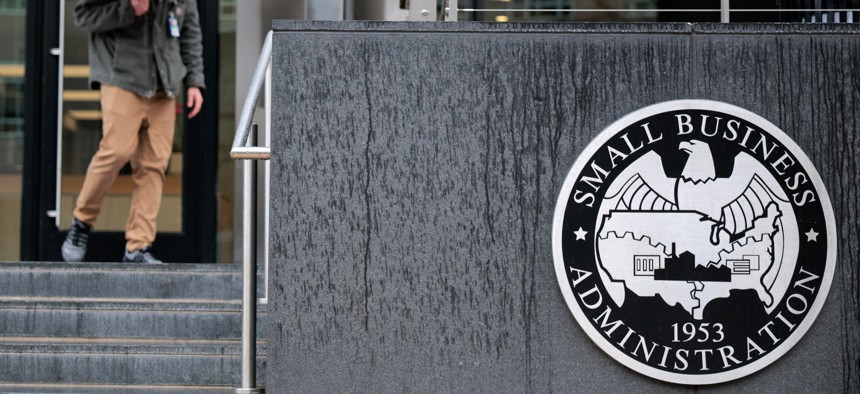
One SBA office has told those who accepted the “deferred resignation program” they must work until a to-be-determined date in May after the agreement stated their last day would be April 19. Chip Somodevilla / Getty Images
Employees swarm to second ‘deferred resignation’ offer, though some are receiving unexpected responses
At USDA, 16,000 employees have signed up for the “DRP.”
Federal employees across government are signing up for paid leave through September before they must leave government, but some are finding the terms have changed from the original promise.
One office at the Small Business Administration with around 1,500 employees has told those who accepted the “deferred resignation program” they must work until a to-be-determined date in May. SBA, which reopened the DRP for a second round late last month, originally told employees they could leave April 19.
Employees were told the delay was due to human resources failing to sign off on the agreements, according to communications viewed by Government Executive, making them invalid. A copy of one such agreement, however, also viewed by Government Executive, included the signature of John Serpa, SBA’s new chief human capital officer.
SBA did not respond to an inquiry asking to explain the discrepancy. It was not immediately clear whether the delays impacted more than the 1,500 employees in SBA’s COVID-19 Economic Injury Disaster Loan Servicing Center. In the first round of the DRP, the Internal Revenue Service similarly told some employees who took the deal they would have to work until May 15.
SBA is “extending our time to get the pipeline cleaned out before they lose everyone,” one impacted employee said. “I guess too many people took the offer.”
The agency has announced it will cut 43% from its workforce of 6,500 employees.
The Trump administration initially created the program for nearly all of the federal workforce in January, shortly after President Trump took office. Around 75,000 employees—or around 4% of the workforce, accepted that offer, though the opt-in rate is expected to climb this time around.
At the Agriculture Department, for example, 16,000 employees have taken the offer in the two windows combined, according to two employees familiar with the matter. That represents about 16% of the USDA’s workforce as of late 2024. More than 3,500 employees have accepted the offer at the U.S. Forest Service alone—USDA’s largest component—in the second DRP window, according to a third department official.
Employees across the department had until April 8 to opt into the program. Widespread layoffs are expected shortly, followed by relocations into new hubs around the country.
USDA has implemented a heavy pressure campaign to motivate employees to accept the extended paid leave offer as it seeks to minimize the number of employees it must lay off through reductions in force. Employees received as many as 20 emails from HR, agency leadership and their own supervisors during the week the DRP window was open encouraging them to take advantage of the offer.
“We were being peppered like hot wings before grilling,” one employee who received the email barrage said.
That employee added USDA will experience “historic brain drain,” and the expectation of high DRP acceptance “proves emotional and psychological aggression is effective.” A spokesperson for the department said USDA’s work would not be compromised.
“Under President Trump’s leadership, USDA is being transparent about plans to optimize and reduce our workforce and to return the department to a customer service focused, farmer first agency,” the spokesperson said. “We have a solemn responsibility to be good stewards of Americans’ hard-earned taxpayer dollars and to ensure that every dollar is being spent as effectively as possible to serve the people.”
Not all agencies have offered DRP 2.0, as was the case in the first window of the program, though at least the Interior Department, Treasury Department, Veterans Affairs Department and General Services Administration have joined SBA and USDA.
Employees at other agencies are similarly expecting significant buy-in for the DRP offers.
Interior staff in offices expected to be affected by upcoming consolidations, having been warned of the upcoming cuts by leadership in their respective bureaus, told Government Executive they have seen huge swaths of the workforce opt into “DRP 2”. One impacted worker said of his regional team expected to be swept up in the consolidation and accompanying RIF, at least 75%—and possibly everyone—will take the deferred resignation.
How are these changes affecting you? Share your experience with us:
Eric Katz: ekatz@govexec.com, Signal: erickatz.28
NEXT STORY: Top homeland security lawmaker calls for cautious cuts to CISA







